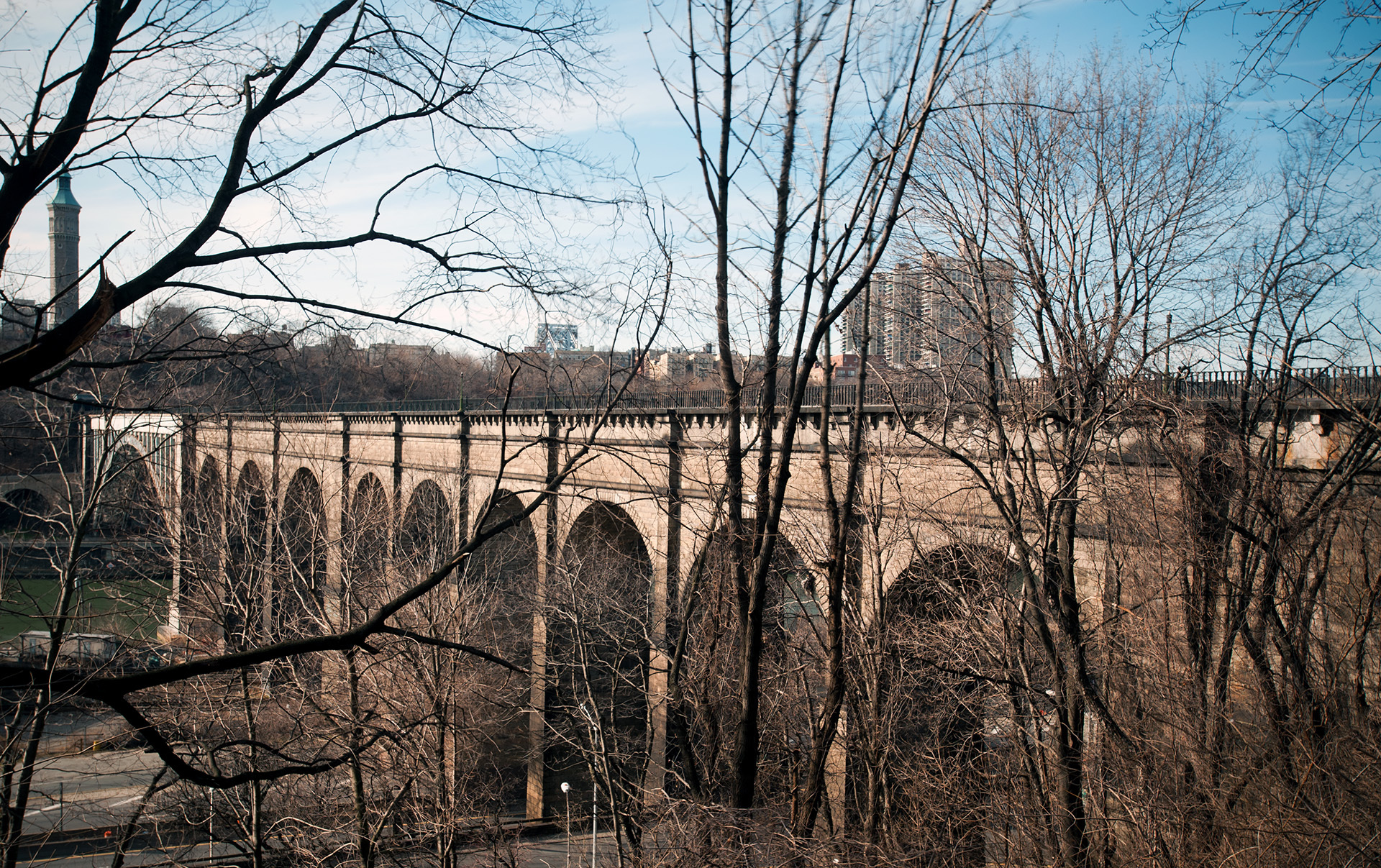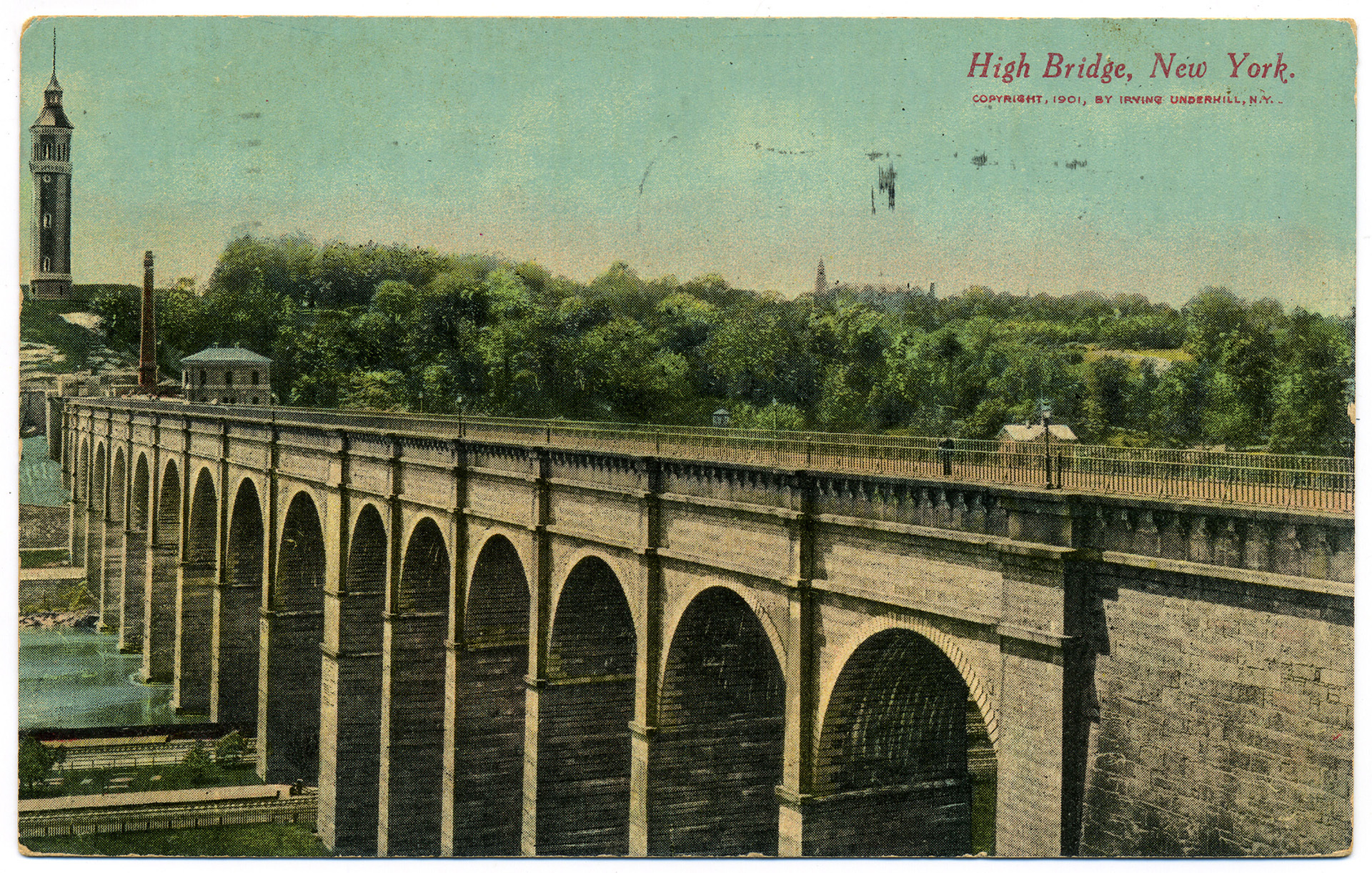High Bridge
Then
The High Bridge, also known as the Aqueduct Bridge, opened in 1848 and is the oldest extant bridge in New York City. The bridge was built to carry the Croton Aqueduct into New York City from upstate New York.
John Bloomfield Jervis, chief engineer of the Erie Canal, was chosen as engineer for the project by the Board of Water Commissioners in 1836 (he was preceded by Major David B. Douglass). Jervis wanted to build a low syphon bridge at the site because it would cost less, but after petitioning by local opposition, the State Legislature passed a law requiring at least 100 feet of clearance for the bridge.
The design built consisted of 15 circular arches, with a clear height of 114 feet at high tide. Water was carried through the bridge in two 36-in pipes (a third, 90-inch pipe was added in 1861). The first water flowed through the bridge’s pipes on July 4, 1842, and a celebratory parade followed on October 14.

High Bridge, 2012
Now
The Croton Aqueduct was not the city’s only source of clean water for long; the New Croton Aqueduct opened in 1890, and the Catskill Aqueduct opened in 1924.
During the 1920s, the city suggested demolishing the High Bridge after the War Department served notice that the bridge’s piers, which are narrowly spaced, were considered an obstruction to boat traffic. New York City’s citizens as well as numerous professional engineering organizations protested, and debates followed for the next several years.
In 1927, the city approved a plan that replaced five of the arches with one steel arch. The “Old” Croton Aqueduct went completely out of service in 1940, and the pedestrian path was closed in the 1970s. It has been designated a National Historic Civil Engineering Landmark in 1975, and as a National Historic Landmark in 1992. The bridge was rehabilitated beginning in 2012 and and reopened to the public in 2015 (NYC Parks Department, PDF).
